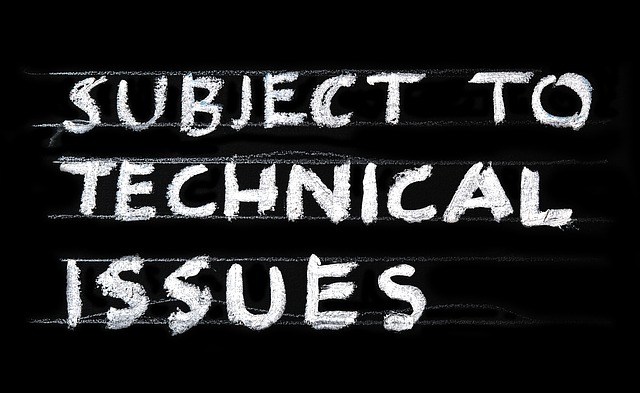Chronicles of A Substitute Teacher: Stop, Collaborate, and Listen- Classroom Management Tips Pt. 1

The Struggle Is Real
Classroom management is one of the most difficult things to teach new educators. It truly is something you can only learn with practice and, generally, after a lot of failed attempts. I mean, you can’t just walk into a classroom and expect students to listen to every word you say. Even then, they break out into small groups or do labs or activities and you have to get their attention again somehow. The how? Well, that changes with each class and teacher. And if it was easy, they wouldn’t sell so many books, apps, and conferences in order to train teachers on the best practices for keeping students on track and engaged with learning. Even when educators do achieve balance, it is often only to gain the level of controlled chaos that you can accept.
In my experience, believe it or not, students are not out to misbehave and disrupt class on a regular basis. The two common culprits for classroom management struggles are boredom and uncertainty. If a student has become disengaged with the lesson, they are going to tell you, and generally in not the most loving of ways. If a student doesn’t understand the instructions for an activity, they will make up their own interpretation of what it is they think they should be doing. Your job as the teacher is to create lesson plans that are relevant to your students and explain things clearly and provide consistency in your expectations.
The next struggle with classroom management is that you have to figure out what gets your students to respond positively. The four general options with this include positive and negative reinforcement to encourage a behavior, or positive or negative punishment to discourage unwanted behaviors. In this case, think of positive or negative as you would mathematically, positive means a stimulus is added and negative means it is removed.

What Works For You May Not Work For Your Students
As an educator, I favor positive reinforcement by offering praise often, and giving out stickers or stamps for completed work and correct behaviors. As I stated before, students generally want to do the right thing, but they often need to be reminded what that is in a low stakes way, so when I praise one student by saying “Hey, it looks like my friend Alex is showing me they are on track and ready for the next activity! Who else is showing me they are ready?” I see classmates turn to the student setting the example and start figuring out what it is I am expecting of them at that time.
If am feeling particularly giving that day, I may favor negative reinforcement. So I might say “I will give you 15 second to clean off your desks and have your books open to page 131. If you can all do that before time is up, I will eliminate one question from the assignment for the day. Ready? Go.” Students want to win this challenge and set to work to follow instructions so they can get out of doing something they don’t necessarily like.
Punishment is my least favorite tactic. Positive or negative, kiddos get defensive and upset when they are being punished and often shut down and stop listening. That being said, it is necessary at times. I tell my kiddos the same thing my 7th grade teacher, Mr. Broaddus, told me and my peers: “I will be as nice as you let me be, but if you won’t let me be nice, then I will have to be mean.” Students get a reminder, then a warning, and then a punishment. Depending on the offense, it may be a small punishment. “If you and your friends can’t sit next to each other and stay on task, I will ask you to move to different seats.” If it is a large offense, then it results in a referral which is a lot more trouble for the teachers than the teachers really care to portray, but usually at that point we have exhausted all of our available interventions and have no choice but document the behavior.

Lessons Learned the Hard Way
I’m still learning and I still have days where I could have done better. That is the beauty of teaching, you practice what it means to make mistakes and learn from them every day and hope that your students will do the same. What I have learned is especially important in teaching and classroom management is that no matter what style you favor, avoid arguments and power struggles (Hint: No one wins in this situation and you can damage relationships with students) and avoid using sarcasm. For students that want to argue, I say “I only argue after 3 p.m., so if you still want to discuss this after school then please come by my class then.” Most kiddos don’t get sarcasm, and when they do, they take it the wrong way. So best just to follow Horton the Elephant’s example of “I meant what I said and I said what I meant.”
I hope you like this general overview of classroom management and how I have learned to use it in my classrooms. I will have a Pt.2 that gives you examples of call-outs that I have used in class. For those that don’t know, call-outs are a way to get students attention quick. Some teachers have a bell they ring or even a small class gong. Others use their voice and teach students to respond with something that means they heard the teacher and are listening for the next instruction.
Chronicles of A Substitute Teacher Archives: 1, 2, 3, 4, 5, 6, 7, 8, 9, 10, 11
Stay awesome,
As you get into your own class, your student's will learn "the look".
How did I forget "the look?!" For me, if it is one student or a small group, they get "the look," if the entire class gets out of hand and aren't responding correctly I take an exaggerated slow, deep breath at the front of the class and say you have to the count of three before I put an X on the board. They know if the class as a whole gets three X's on the board there will be a consequence. Usually an independent activity in lieu of a group activity.
At least when I took over the long-term position that is what I did anyway lol. I will probably discuss with my new team what they do on a regular basis for whole class problems. Every school/grade level/team seems to have their own set of consequences for misbehavior.
Oh, this is good info! I often wish I knew more about the tactics my son's teachers are using at school. I'm all eyes and ears anytime I visit his pre-school because he's been so receptive to the way they discipline. Like any other kiddo, he's always testing his boundaries with Mommy & Daddy, but usually, if I use a phrase they use at school, he responds immediately.
I've missed a few of these posts, so I'll have to go back and do some reading, but great work with this series, @tltran!
Thanks! The younger kids like him get a lot of a short sentence requests, so it does take some getting used to in order to say the phrases, but once you get them it's hard to get out. ie: "Time to sit,""Time to stand,""Not a choice," etc. I use them a lot with my older kids these days because I am basically programmed to respond in those ways after so many days working in Pre-K. Classical conditioning is a heck of a thing, no matter your age. Lol. His school also uses Conscious Discipline strategies as well, if you want to look into them further.
Thank you! I definitely will read up on those!